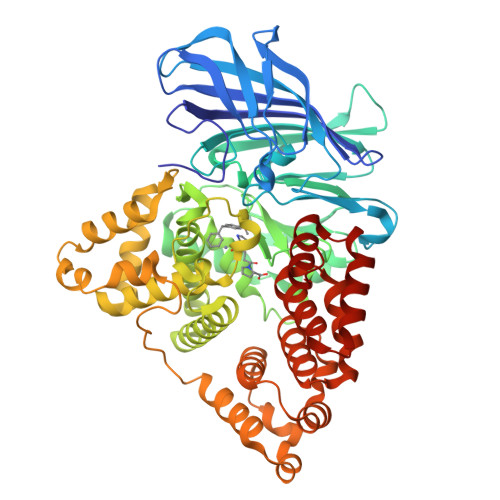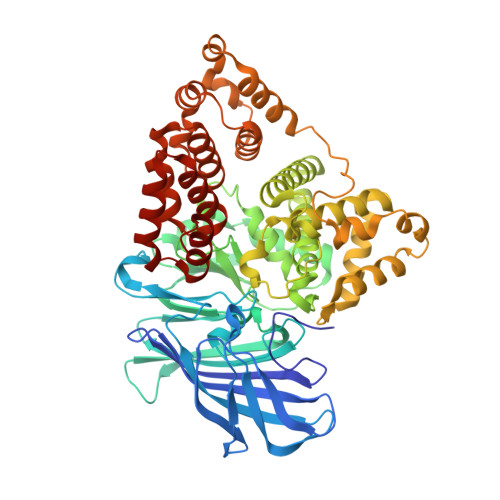Substrate-dependent modulation of the leukotriene A 4 hydrolase aminopeptidase activity and effect in a murine model of acute lung inflammation.
Lee, K.H., Ali, N.F., Lee, S.H., Zhang, Z., Burdick, M., Beaulac, Z.J., Petruncio, G., Li, L., Xiang, J., Chung, E.M., Foreman, K.W., Noble, S.M., Shim, Y.M., Paige, M.(2022) Sci Rep 12: 9443-9443
- PubMed: 35676292
- DOI: https://doi.org/10.1038/s41598-022-13238-6
- Primary Citation of Related Structures:
7KZE, 7LLQ - PubMed Abstract:
The aminopeptidase activity (AP) of the leukotriene A 4 hydrolase (LTA 4 H) enzyme has emerged as a therapeutic target to modulate host immunity. Initial reports focused on the benefits of augmenting the LTA 4 H AP activity and clearing its putative pro-inflammatory substrate Pro-Gly-Pro (PGP). However, recent reports have introduced substantial complexity disconnecting the LTA 4 H modulator 4-methoxydiphenylmethane (4MDM) from PGP as follows: (1) 4MDM inhibits PGP hydrolysis and subsequently inhibition of LTA 4 H AP activity, and (2) 4MDM activates the same enzyme target in the presence of alternative substrates. Differential modulation of LTA 4 H by 4MDM was probed in a murine model of acute lung inflammation, which showed that 4MDM modulates the host neutrophilic response independent of clearing PGP. X-ray crystallography showed that 4MDM and PGP bind at the zinc binding pocket and no allosteric binding was observed. We then determined that 4MDM modulation is not dependent on the allosteric binding of the ligand, but on the N-terminal side chain of the peptide. In conclusion, our study revealed that a peptidase therapeutic target can interact with its substrate and ligand in complex biochemical mechanisms. This raises an important consideration when ligands are designed to explain some of the unpredictable outcomes observed in therapeutic discovery targeting LTA 4 H.
Organizational Affiliation:
Department of Chemistry & Biochemistry, George Mason University, 10920 George Mason Circle, Manassas, VA, 20110, USA.





















